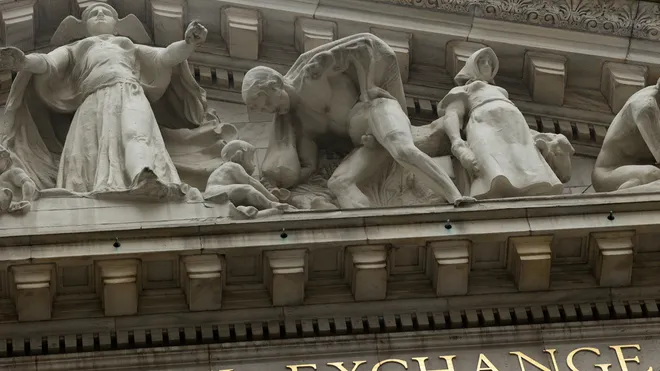
U.S. stocks closed a choppy session mixed, struggling to hold early gains made on a cooler-than-expected inflation report.
The producer price index (PPI), a measure of wholesale prices, rose 0.2% in December from the prior month, the Bureau of Labor Statistics said. That was less than Dow Jones’ average economist forecast for a 0.4% jump. The monthly core rate, which excludes the volatile food and energy sectors, was flat.
“PPI reminds people that we’re still in a period of moderating prices and falling rates,” said David Russell, global head of market strategy at online trading platform TradeStation. “It vindicates the Fed’s decision to ease last year and restores some hope of a second rate cut. Dropping food prices are also welcome news for the incoming Trump Administration.”
Initially, all three major stock indexes rose at the open but by the end of the day, only the blue-chip Dow Jones Industrial Average and broad S&P 500 index held gains. The S&P 500 index closed up 0.11%, or 6.69 points, at 5,842.91, the Dow up 221.16 points, or 0.52%, to 42,518.28 but the tech-heavy Nasdaq lost 0.23%, or 43.71 points, to 19,044.39. The benchmark 10-year Treasury yield was at 4.788%.
Inflation caution remains
Even with the better-than-expected PPI, all eyes will be on consumer inflation, or what everyday Americans pay for goods and services, economists said.
“Friday’s exceptionally strong jobs report seems to have woken up the inflation worriers from their hibernation,” said BeiChen Lin, investment strategist at money manager Russell Investments. “Even a mildly hotter than expected inflation report could cause a sell-off in bonds and equities.”
A hot inflation report could add to the argument the Federal Reserve should keep rates higher for longer, economists said. Higher rates make borrowing more expensive and slow the economy and corporate profits, while inflation eats away at bond returns.
Economists, on average, forecast the annual consumer price index (CPI) to have been up 2.8% in December from 2.7% the prior month, FactSet said. The annual core rate is expected to remain steady at 3.3%.
The CME FedWatch tool, which measures the odds the Fed will change rates at each policy meeting during the year, shows more than a 97% chance the Fed will keep rates steady at its January meeting and about an 80% chance it will do so again in March.







